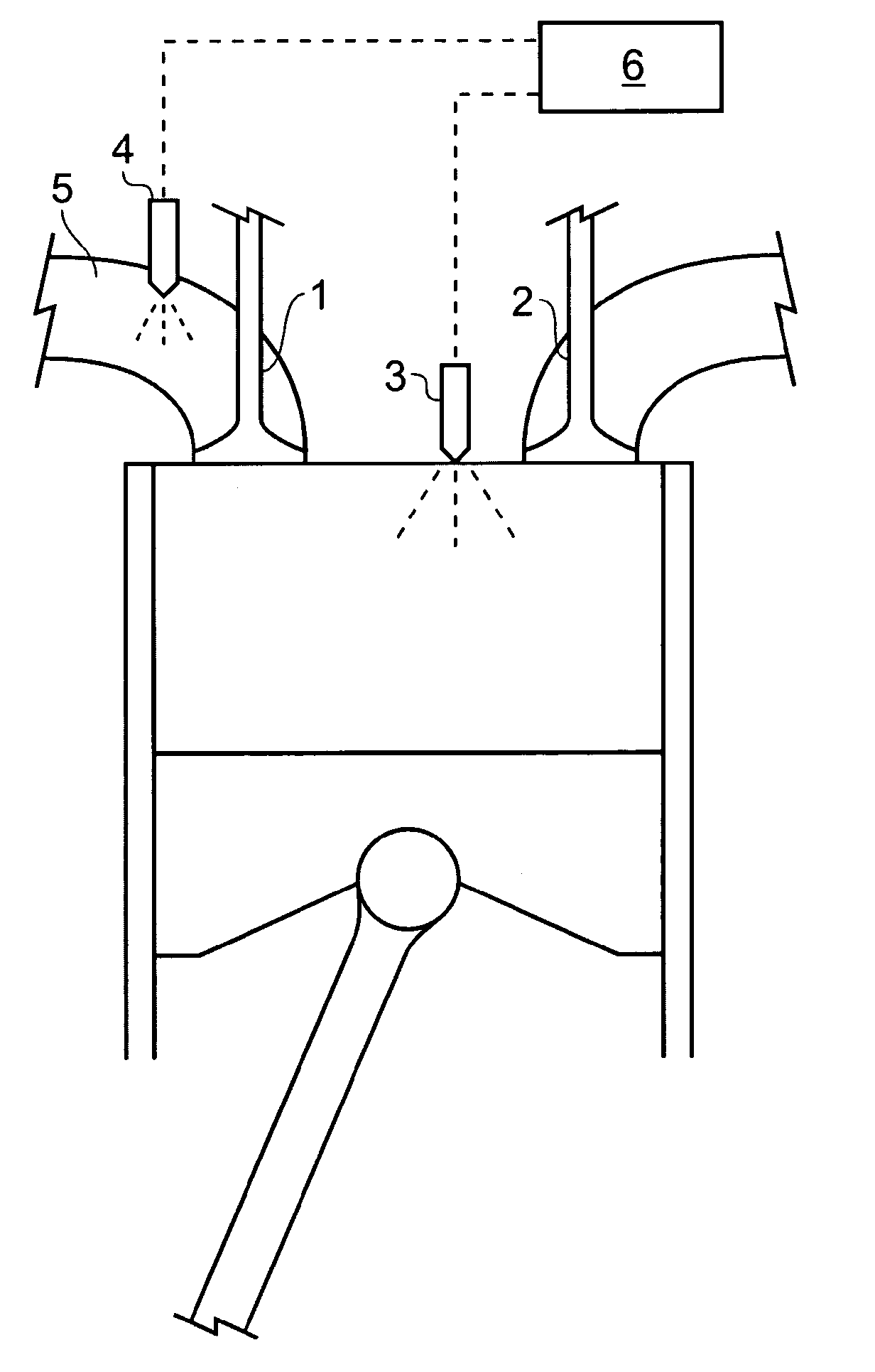Multi-fuelling an engine
a multi-fuelling, compression ignition technology, applied in the direction of machines/engines, oscillatory slide valves, electric control, etc., can solve the problems of increased knock susceptibility, increased ignition delay, increased nitrous oxide (nosub>x/sub>), etc., to reduce nox and soot emissions
- Summary
- Abstract
- Description
- Claims
- Application Information
AI Technical Summary
Benefits of technology
Problems solved by technology
Method used
Image
Examples
Embodiment Construction
1) Experimented Equipment
[0082]The invention is now described by reference to experiments conducted in relation to dual-fuelling of CI engines using a Ricardo E6, single cylinder, four stroke research engine shown schematically in FIG. 70. The engine is fitted with a head having two poppet valves 1, 2 with a direct diesel injector 3 that allows multi-split injection (up to 5 per cycle) and is fed by a common rail with a maximum pressure of 1600 bars. The rail pressure is independently controllable by the fuel pump. A supplementary injector 4 is also mounted on the air intake pipe 5 to allow the part injection of bioethanol. The two fuel injectors 3, 4 are controlled by a central unit 6, which varies the injection timings and fuel qualities. The engine is adapted to run between 500 rpm and 3000 rpm but tests were mostly conducted at a low speed of 1000 rpm where susceptibility to engine knock is greater, this being an issue with which the invention is concerned.
[0083]The engine is fi...
PUM
 Login to View More
Login to View More Abstract
Description
Claims
Application Information
 Login to View More
Login to View More - R&D
- Intellectual Property
- Life Sciences
- Materials
- Tech Scout
- Unparalleled Data Quality
- Higher Quality Content
- 60% Fewer Hallucinations
Browse by: Latest US Patents, China's latest patents, Technical Efficacy Thesaurus, Application Domain, Technology Topic, Popular Technical Reports.
© 2025 PatSnap. All rights reserved.Legal|Privacy policy|Modern Slavery Act Transparency Statement|Sitemap|About US| Contact US: help@patsnap.com



